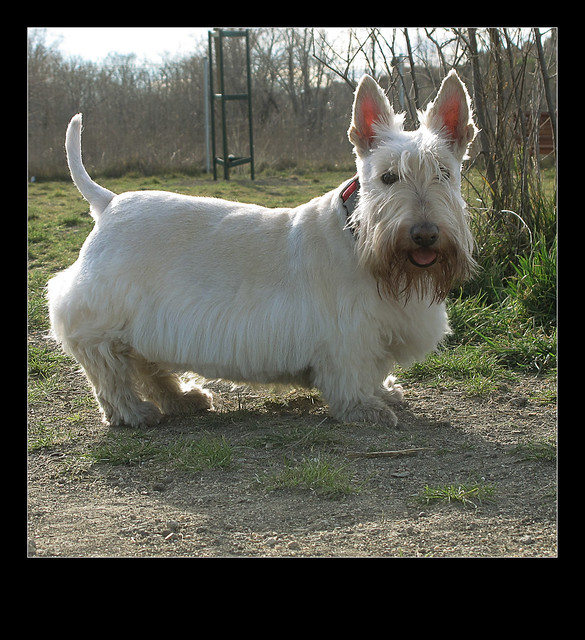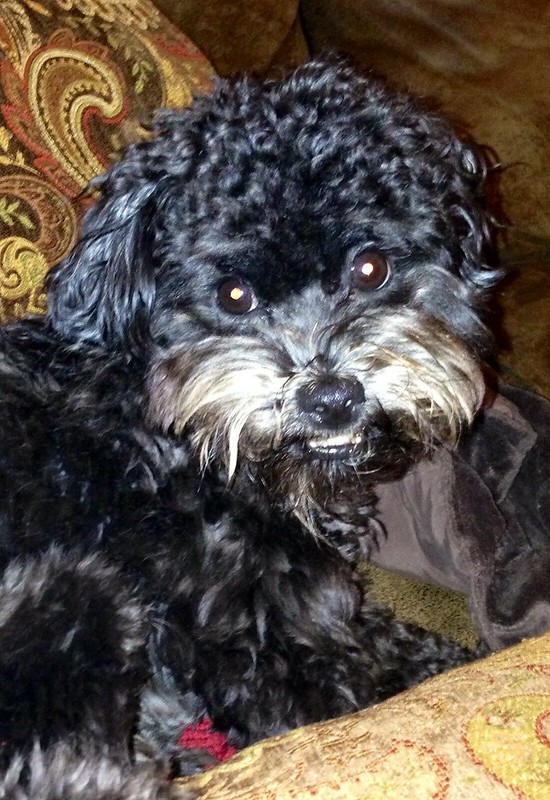The Cairn terrier hails from Scotland, as do its close and outstanding relatives, the Scottish terrier and the West Highland terrier. Much like another cousin, the Welsh terrier, the Cairn is probably an underappreciated breed in the United States, while it remains wildly popular in the old country. But its relative dark horse status is likely just fine with serious Cairn fans.
 |
| (Photo credit: Wikipedia) |
Unlike several fancier strains of terrier, the Cairn has never been subjected to uptown clips and beauteous barbering, like the Kerry or the Wire terrier. As a result, the Cairn can look pretty shaggy in comparison, and resembles the working dog he was born and bred to be. Cairns, after all, were named after the cairns or piled stones in the Scottish Highlands they so often set themselves to digging through, looking for rats. The Cairn was a fearless hunter of vermin and rouster of foxes, with strong claws, teeth, and an absolutely nonnegotiable hunting instinct. He is not the type of dog you can set loose in the park.
The Cairn terrier is a convenient size for most modern families, weighing only about 13 or 14 pounds. He is tough and resilient, and has a genuine liking for children, although you'll still need to make sure that they treat him gently, like any other dog. The Cairn is a cheerfully independent type with an incredibly sharp brain. You'll want to give him some interesting jobs around the house and make sure he stays as challenged as possible (otherwise, he’s likely to challenge your flower beds). Even though many modern small dogs essentially end up as lapdogs, the Cairn has the smarts and the perseverance to be much more.
Despite his shaggy locks, some terrier lovers find a unique and rustic beauty in this breed. If you want an active, enthusiastic, tough little terrier companion, the Cairn deserves your serious consideration.
Cairns come in almost all colors -- anything but white conforms to type. Anyone wanting to add a small, sharp and very affectionate dog to their family unit would do well to consider the long-lived Cairn.







